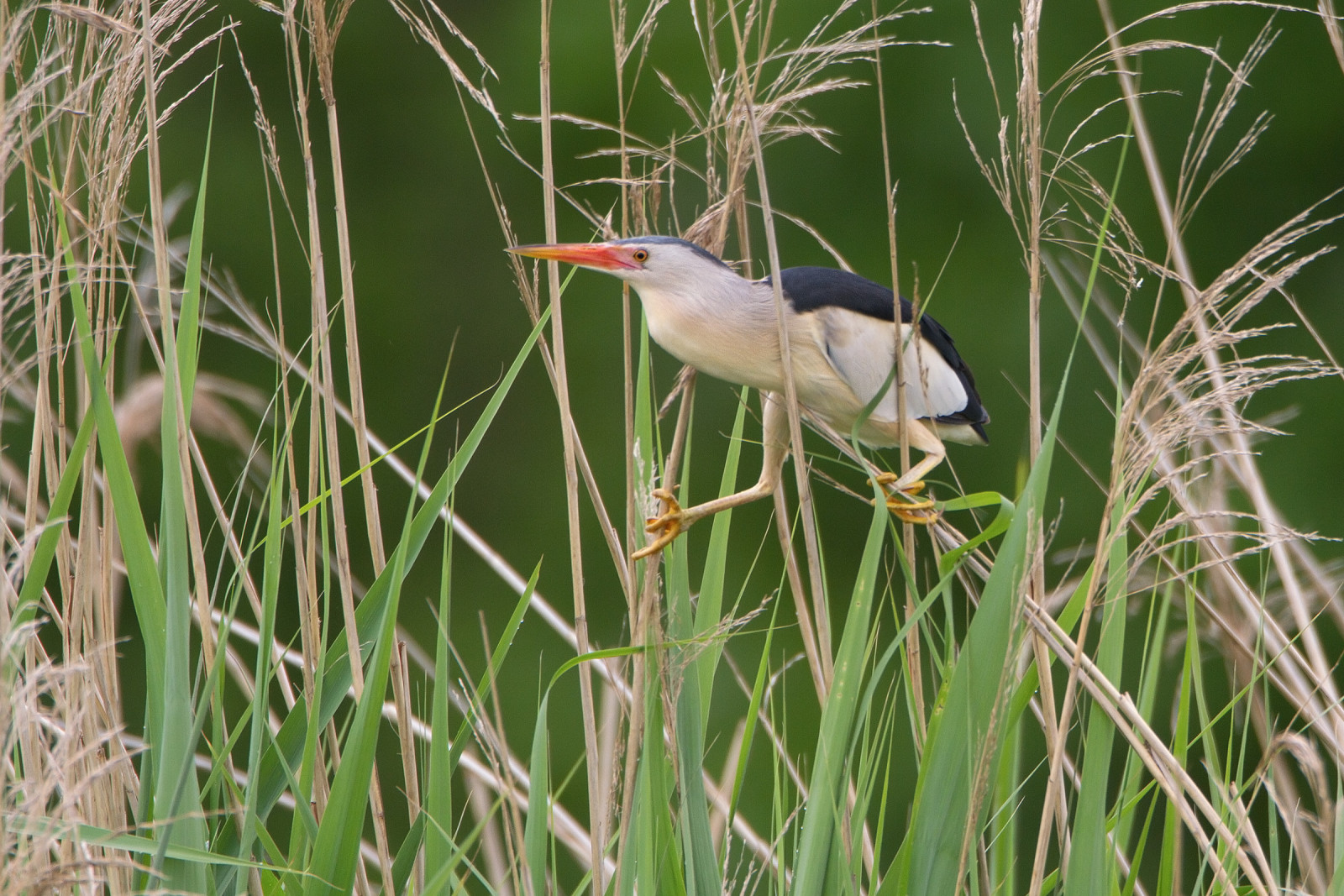Beschreibung
The Natural Reserve “Torbiere del Sebino” is an important wetland for biodiversity in the Po Valley. The territory, which covers about 360 ha, consists mainly of reeds and bodies of water surrounded by cultivated fields. Seventeen species of birds nest in the area of the marsh. The marsh is also used by winter visiting species or by others who rest for brief periods during their winter and spring migrations. In other parts of the Reserve about 20 species nest. The species of the first group (bog nesters) are: Zwergdommel, Wasserralle, Drosselrohrsänger, Girlitz (the major concentrations of these species in the province of Brescia can be found in the Reserve), Rohrschwirl (the most numerous species), Beutelmeise (that in the Province of Brescia only nests in this area), Kuckuck and Seidensänger . The species that one sees most often are: grebes, some types of herons and ducks. And of course there is als many other birds like Mönchsgrasmücke, Rohrweihe and many more you can see, see the birdlist below.
_________________________
Italiano: La Riserva Naturale delle Torbiere del Sebino, dichiarata “zona umida di importanza internazionale” secondo la Convenzione di Ramsar, Zona Speciale di Conservazione (ZSC) e Zona di Protezione Speciale (ZPS) nell’ambito della Rete Natura 2000, è considerata un’area prioritaria per la biodiversità nella Pianura Padana lombarda. Ciò si deve alla varietà di habitat e di specie, acquatico-palustri, pregiate o di interesse comunitario presenti nel territorio, rare o a rischio di estinzione in Lombardia e in Italia.
L’area è particolarmente importante per gli uccelli acquatici nidificanti, svernanti e migratori. Tra le specie protette e di interesse comunitario che nidificano nel sito citiamo: l’airone rosso (Ardea purpurea), il falco di palude (Circus aeruginosus), il tarabusino (Ixobrychus minutus), il nibbio bruno (Milvus migrans), la nitticora (Nycticorax nycticorax), il voltolino (Porzana porzana), la schiribilla (Ponzana parva), la salciaiola (Locustella luscinioides). Tra le specie svernanti e migratrici sono di particolare interesse il tarabuso (Botaurus stellaris), l’albanella reale (Circus cyaneus) e la moretta tabaccata (Aythya nyroca). Le Torbiere del Sebino sono inoltre uno dei pochi siti riproduttivi in Lombardia del basettino (Panurus biarmicus). Le specie, invece, che più comunemente si possono osservare nella Torbiera, sono: il cigno reale (Cygnus olor), il cormorano (Phalacrocorax carbo), la gallinella d’acqua (Gallinula chloropus), la folaga (Fulica atra), lo svasso maggiore (Podiceps cristatus), il germano reale (Anas platyrhynchos), l’airone cenerino (Ardea cinerea), il cannareccione (Acrocephalus arundinaceus) e il pendolino (Remiz pendulinus). La Riserva Naturale ospita 31 specie di uccelli (su un totale di 164 specie osservate) di interesse comunitario e quindi tutelati dalla Direttiva “Uccelli” 79/409/CEE, concernente la conservazione dell’avifauna selvatica; per questo è stata dichiarata “Zona di Protezione Speciale (ZPS)” dall’Unione Europea.
Details
Zugang
By car: from motorway A4 Milano-Brescia, exit “Ospitaletto”, take tangenziale for Iseo, exit “Camignone”. Go along the road until Provaglio. On the left you find the Monastery of S. Peter in Lamosa the start of guided visits. The visit center is in front of sports area. In the village Corte Franca there is another access to the Reserve. By train: from Brescia, take the local train Brescia-Edolo and get off at stop “Provaglio d’Iseo – Timoline”
The Reserve has three different access points: 1 Ingresso Nord – Percorso Nord: in Iseo, at the Visitor Reception Center, in front of the sports field. 2 Ingresso Centrale – Central Route: in Provaglio d'Iseo, at the Monastery of San Pietro in Lamosa. 3 Ingresso Sud – South Route: in Corte Franca at the Infopoint, Via Segaboli, near the parking lot of the Shopping Center "Le Torbiere". At each entrance there is an automatic dispenser for the payment of the entrance ticket, active 24/24h [NB. working only with 1€ coin]. You can make a circular walk around the entire area that is about 9 km. If that is too long, you can make a shortcut halfway.
_________________________
Italiano: In auto: da Milano o Venezia uscita Autostrada A4 di Rovato direzione Iseo o Provaglio d’Iseo sulla SP11. Da Brescia direzione ISEO sula SP510 fino ad Iseo per raggiungere il Centro visitatori. Per visite guidate proseguire fino a Provaglio d’Iseo. In Treno: Arrivo alla stazione di Brescia si prosegue con Trenord sulla linea Brescia-Iseo-Edolo fino alla stazione di Provaglio d’Iseo – Timoline. L’ingresso alla Riserva avviene tramite tre punti di accesso diversi, ognuno collocato su un diverso percorso: Ingresso Nord – Percorso Nord: a Iseo, presso il Centro Accoglienza visitatori, di fronte al campo sportivo. Ingresso Centrale – Percorso Centrale: a Provaglio d’Iseo, presso il Monastero San Pietro in Lamosa. Ingresso Sud – Percorso Sud: a Corte Franca presso l’Infopoint, Via Segaboli, vicino al parcheggio del Centro Commerciale “Le Torbiere”. Ad ogni ingresso è collocato un erogatore automatico per il pagamento del biglietto di ingresso, attivo 24/24h [NB. funzionante solo con moneta da 1€]



